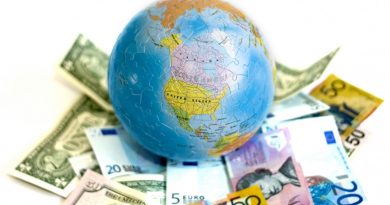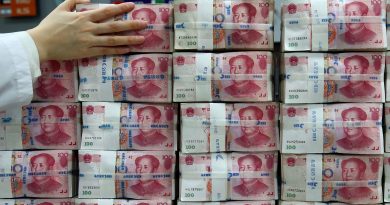Grabbing a bigger slice of the FDI pie
By Kamal Kandewatta
Investment is a prominent mover of economic growth and development and considered a prioritized area in any economy. In developed countries, it is a tool to keep better economic performance while for developing countries, it is a handful tool to achieve better economic conditions and living standards for their people.
Therefore, in any economy whether it is developed or developing, investment has a pivotal role to play.
Funding of investment could be from domestic sources -from domestic savings or from foreign sources. When investments are from foreign sources, particularly Foreign Direct Investment (FDI), it is considered a highly important source of funding in any economy.
Any country would provide incentives and thrive to attract more FDI to accelerate economic growth.
At international level; mainly developing countries that don’t have sufficient amount of domestic savings to invest on infrastructure and human capital will always try to provide competitive incentives such as tax concessions to international investors to attract more FDI inflows to their countries than their peer countries. Not only that, some of them may go on to facilitate FDI through structural changes and policy frameworks as well.
This high competition to attract more FDI among countries has evolved because it has been identified that unlike portfolio investments where the funds are invested in financial assets such as bonds and their benefit-flows could be taken away without adding long-term value to economies of those invested countries.
FDI would provide better economic opportunities to countries; because in the case of FDI the investment is not merely a fund exchange but it will contribute to more employment opportunities and add value to the production of the country as well. On the other hand, FDI will bring advanced technology and managerial know-how that would leverage to domestic economies enhancing long-term benefit flows.
Therefore, FDI has been identified as one of the main sources of funding for developing economies to obtain high economic performance.
The striking economic progress of East Asian nations from 1965-1990 was one instance where FDI facilitated a rapid economic growth even in the countries which were fluttered by wars.
This growth experience in East Asian countries proved to the world that even the countries that suffer from the lack of domestic savings to invest in for economic growth and development can still manage to achieve higher economic progress with the help of FDI.
For example, one of the main secrets behind the success of Four Tiger Nations including Hong Kong, Singapore, South Korea and Taiwan was their ability to attract FDI for various segments of their economies.
In South Korea;while accumulating physical capital the government invested in human capital development that created a comparative advantage over their rival countries.
These FDI flows from developed countries at the said respective time facilitated their economic growth, strengthening the industrial sectors of those countries as well as helped to uplift the living conditions of the people by providing them better employment opportunities. In the case of the East Asian growth miracle, FDI flows from the Developed West as well as outward FDI flows from the Japanese- already established multinationals, also had a key role to play in the economic and technological development of these countries.
However, unlike in the late ’90s, by now many countries have come to a level of economic progress and more and more multinational companies have been established around the world.
Therefore, developing countries; whether they are in Africa or Asia have better chances of enjoying a relatively bigger slice of world FDI flows. Meanwhile, the countries in the Asian region will enjoy more benefits as the operational centre of the world economy is predicted to be Asia in the next century, where the economic powers are likely to shift from the Western hemisphere to the East.
According to the World Investment Report 2017, FDI remains as the largest and most constant external source of finance for developing economies compared to other external sources of finance such as portfolio investments, remittances and official development assistance.
However, as the report points out, the majority of investments are heading towards developed countries because in the recent past, Developed Economies’ share in global FDI inflows has grown to 59 per cent.
An encouraging sign is that FDI flows to transition economies has almost doubled to $68 billion in 2016, followed by large privatization deals and increased investment in mining exploration activities in these countries according to the Report.
Overall, it indicates that the US, China and India are the top prospective destinations for international FDI flows in the world.
On the other hand, multinational corporations have sliced up their production process allowing different nations to contribute to the production of a particular good. These multinationals always try to exploit relative factor price differences that exist in different parts of the world driven by their profit maximizing motive.
Therefore, being a South Asian developing country that does not have sufficient domestic savings to meet investment requirements to achieve accelerated economic growth, Sri Lanka must make sure that the country is well prepared and equipped to tap in to international FDI flows to accelerate economic progress.
Sri Lanka being a small island nation unlike India or China, does not have the advantage of having a large labour force that offers investors a comparative advantage of having cheap labour which would bring down their overall production cost.
However, although Sri Lanka does not have the cheap labour-driven advantage, still the country has the advantage of its geo-politically important location in the Indian Ocean. Therefore, it is very important to look at how Sri Lanka has been attracting FDI flows and the progress it is making.
A significant improvement in the net FDI flows to Sri Lanka is evident since the end of the 1970s. This improvement in FDI inflows were mainly facilitated by the open economic policies introduced in 1977.
It is clearly evident that the improving FDI inflows were disrupted on various occasions as civil insurgency and wars hindered the stability of the economy which also lead to drain investor confidence.
However, after 2009 period there has been an increasing trend in net FDI inflows to the country.
Further, as the present ruling coalition of the country promised during election time that one of their main targets was to attract more FDI to the country and to facilitate investors to achieve the desired level of FDI inflows complemented to achieve higher levels of economic growth and development to uplift the overall living standard of the people.
2017 marked a milestone in this journey, as Sri Lanka grabbed US$ 1.6 billion FDI inflows to the country. And this is expected to grow in the future as well since the Port-city project and Hambantota –Port project is expected to move on in the coming years.
This boost in FDI flows to the country in 2017 is a significant achievement because this was achieved while the country slipped in the World Bank Doing Business Index ranking.
The Doing Business Index indicates how easy it is to do a business in a country from the initial stage to closing down stage of a business. And investors most of the time use this as a yardstick to choose their investment destination.
Therefore, slipping down in this indicator means a loss in Sri Lanka’s international competitiveness as an FDI destination.
However, an American based research institution recently ranked Sri Lanka among the top ten destinations in Asia for FDI flows. According to their study; Sri Lanka, India and Bangladesh are the countries that offer high potential, while Southeast Asian countries such as Indonesia, Vietnam and the Philippines offer better investment opportunities.
However, looking at the countries that used FDI flows effectively to accelerate their economic growth had national policies to facilitate economic growth and FDI as well. But still in Sri Lanka such national policies with the assurance of their longevity is difficult to see and difficult to expect.
On the other side, the right efforts to improve locational advantage of the country to offer unmatched advantage to international investors, has been sadly lacking. Such effort should not be limited to just administrative changes but also upgrading the labour force with skills and language abilities, opening new market opportunities both within the country as well as in regional and global level is also important.
As mentioned earlier, for Sri Lanka to become a top FDI destination in South Asia, the country needs to identify where it could score more and how to stand as an attractive FDI destination. Compared to its South Asian peers such as India and Bangladesh, Sri Lanka will not have the low labour cost-driven advantage but still Sri Lanka can train its labour force so that human capital will help to attract more FDI flows to the country. On the other hand, the regulatory authorities and administrative mechanisms of the country have to be improved to facilitate investors with better facilities.
If these areas that are lacking are addressed, it is no doubt that Sri Lanka will have an accelerated economic growth process in the coming years.
The writer holds a BA(Hons) in Economics from the University of Colombo and is currently a Temporary Assistant Lecturer at the same university. He can be contacted via kamalnishantha92@gmail.com




